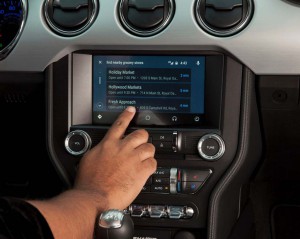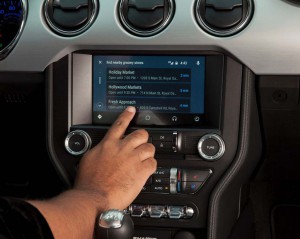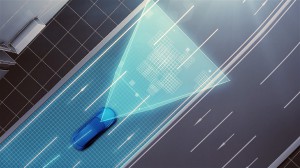The push for connected cars is making for some strange bedfellows. In its push to let users access more of their smartphone apps directly through their car’s infotainment system, Toyota is turning to Ford Motor Co. for help.
Toyota will become the first maker to use open source software dubbed SmartDeviceLink. It’s essentially the same technology developed by Ford for use in its vehicles under the proprietary name AppLink. Ford wants to bring even more partners onboard, betting that it can set an industry standard that will make it easier for both carmakers and car buyers alike to access smartphone apps like Pandora, Spotify and iHeartRadio.
Ford is planning to offer an updated version of AppLink on its own cars later this year, making it possible to use smartphone navigation software in cars not equipped with a built-in navi system. But Ford is also rolling out Apple CarPlay and the similar Android Auto systems as part of its updated Sync3 infotainment technology.
“It’s all about choice,” explained Don Butler, Ford’s executive director of Connected Vehicle and Services, as he flew to Las Vegas to announce the latest move during the annual Consumer Electronics Show.
Butler said an early version of AppLink was heavily updated by Livio, the suburban Detroit software house Ford bought several years ago. It is now releasing that technology for use by any other automaker. While such partners won’t have to pay a licensing fee, there will be a sort of digital referee, he explained, ensuring that the underlying code behind SmartDeviceLink, or SDL, remains standardized so a device that a smartphone that works in one car will perform the same way in another.
(Automakers turn CES into a high-tech car show this year. Click Here for more.)
“Ford is making the software available as open-source, because customers throughout the industry benefit if everybody speaks one language,” Butler explained.
“Developing a safer and more secure in-car smartphone connectivity service which better matches individual vehicle features is exactly the value and advantage an automaker can offer customers,” said Shigeki Terashi, Executive Vice President of Toyota Motor Corporation. “We expect that many companies share our view and will participate in the industry SDL collaboration.”
Other automakers considering SmartDeviceLink include Honda, Mazda, PSA Peugeot Citroen and Subaru, according to Ford.
Allowing motorists onscreen access to their smartphone apps has become a big deal in an auto industry increasingly focused on connectivity. Apple and Google – which offers its own open-source technology in the form of the Android operating system – have developed their own ways to link car and smartphone. A growing number of carmakers are now offering CarPlay and Android Auto for free, though Hyundai has reversed its earlier strategy and will now charge for the Apple system.
While they have similar goals, each of those app-linking technologies work somewhat differently and have different capabilities. And automaker have their own unique software to add still more functionality.
(Ford/Google alliance to go beyond just autonomous vehicles. Click Here for the full story.)
Later this year, Ford will launch an update to the new Sync3 system and, in a significant move, it will allow motorists to directly download that revision via WiFi – though vehicle owners will alternatively be able to order a thumbdrive from Ford or have the update loaded for them at a dealership.
Ford is adding the ability to connect some of its vehicles directly to the Intern through an onboard WiFi receiver. But unlike some competitors, including General Motors’ Chevrolet division, Ford currently does not have onboard 4G LTE capability. That is something it is studying for the future, Butler hinted. For now, a motorist will have to connect to a WiFi signal beamed out of a home, office or coffee shop, to get the update wirelessly.
Still more connectivity options are expected to become available. Cellular companies are working up even faster 5G systems. Meanwhile, federal regulators are thought likely to soon mandate connected car systems that would allow vehicles to link to one another, as well as a roadway infrastructure. But that technology would be used to provide motorists with such things as traffic and weather information.
(Toyota reveals new high-res mapping system for autonomous vehicles. Click Here for the latest.)



